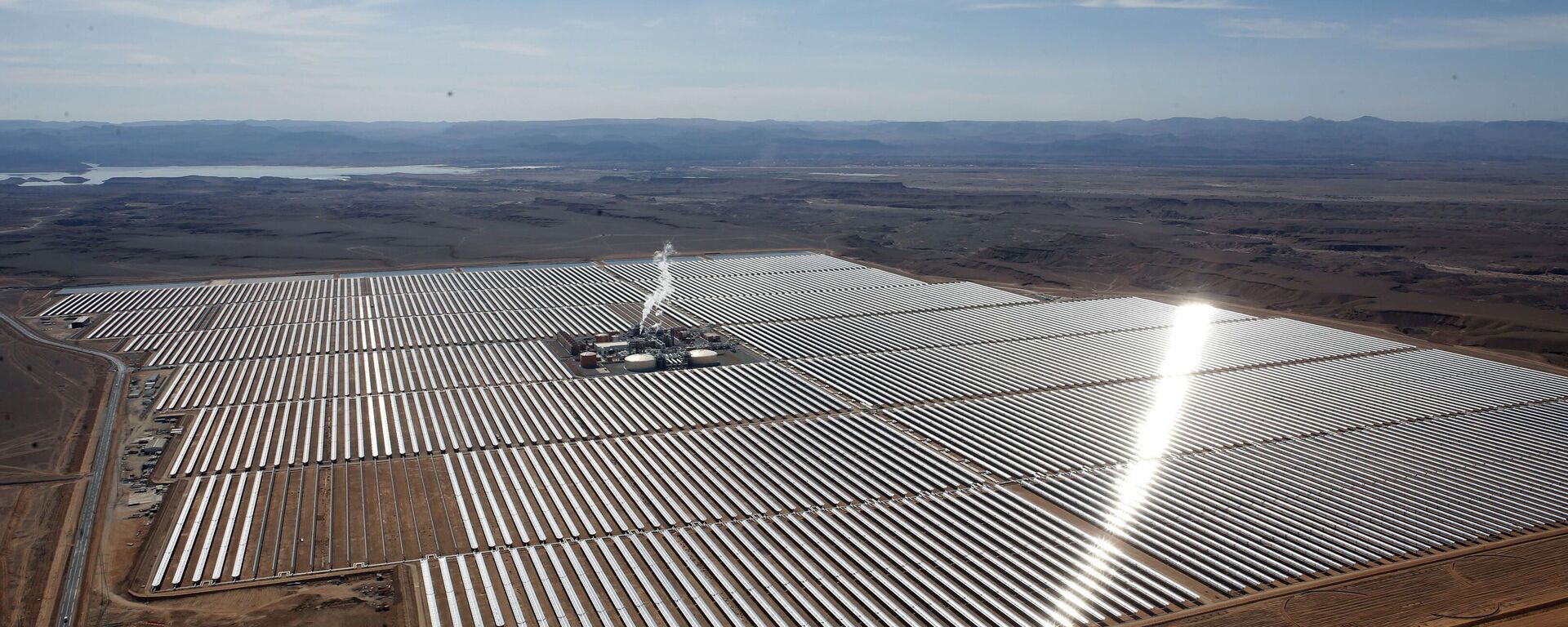https://en.sputniknews.africa/20230620/these-african-countries-have-best-electrification-levels--1060053307.html
These African Countries Have Best Electrification Levels
These African Countries Have Best Electrification Levels
Sputnik Africa
Access to electricity varies dramatically from one African country to another. Some of them, however, show complete coverage, according to a recent report by... 20.06.2023, Sputnik Africa
2023-06-20T19:11+0200
2023-06-20T19:11+0200
2023-08-03T10:49+0200
south africa
north africa
electricity
energy
sub-saharan africa
maghreb
egypt
seychelles
mauritius
algeria
https://cdn1.img.sputniknews.africa/img/07e7/06/14/1060053286_0:134:3165:1914_1920x0_80_0_0_fd00d4dd502afd6ed87da2201bf9116d.jpg
Electrification remains one of the major issues for the development of Africa. The continent is the least electrified in the world and 567 million people do not have access to this energy in sub-Saharan Africa, according to a recent report by the International Energy Agency (IEA).However, there are some "good students", who have electrification rates of 100% according to data collected in 2021. These are the three countries of the Maghreb, Egypt, and Seychelles and Mauritius. Algeria and Tunisia rely in particular on their hydrocarbon resources, which make up almost 90% of their electricity mix. Other countries such as Gabon (89% of electrification), Ghana (86%) or Kenya (77%) remain in the lead pack. South Africa also has good coverage (89%), even if the country has been subjected to widespread outages in recent months, which have an impact on its activity and should influence its growth in 2023, as highlighted by the recent forecasts of the World Bank.'Bad students'However, gaps persist on the continent and some African countries continue to present very low electrification rates. The Democratic Republic of the Congo has 76 million people without access to this source of energy, while there are 86 million in Nigeria and 55 million in Ethiopia. However, the latter two countries are on the right track, with the access deficit having decreased by two million people per year each year between 2019 and 2021, the IEA noted. The same note of hope came for South Sudan which came out of the top 20 of the least electrified countries. Some countries on the continent have recently invested in large power plant projects. Zimbabwe thus intends to double its production by 2025, in particular to support its mining sector. The country is counting in particular on the new floating solar power plant at the Kariba Dam. Madagascar will also acquire a new hydroelectric power plant in the east of the country, which should produce 750 Gigawatt hours of clean energy annually.
https://en.sputniknews.africa/20230525/solar-investment-outshines-oil-iea-says-1059462048.html
south africa
north africa
maghreb
egypt
seychelles
mauritius
algeria
tunisia
gabon
ghana
kenya
democratic republic of the congo (drc)
zimbabwe
Sputnik Africa
feedback@sputniknews.com
+74956456601
MIA „Rossiya Segodnya“
2023
Sputnik Africa
feedback@sputniknews.com
+74956456601
MIA „Rossiya Segodnya“
News
en_EN
Sputnik Africa
feedback@sputniknews.com
+74956456601
MIA „Rossiya Segodnya“
Sputnik Africa
feedback@sputniknews.com
+74956456601
MIA „Rossiya Segodnya“
south africa, north africa, electricity, energy, maghreb , egypt, seychelles, mauritius, algeria, tunisia, gabon, ghana, kenya, democratic republic of the congo (drc), zimbabwe, international
south africa, north africa, electricity, energy, maghreb , egypt, seychelles, mauritius, algeria, tunisia, gabon, ghana, kenya, democratic republic of the congo (drc), zimbabwe, international
These African Countries Have Best Electrification Levels
19:11 20.06.2023 (Updated: 10:49 03.08.2023) Access to electricity varies dramatically from one African country to another. Some of them, however, show complete coverage, according to a recent report by the International Energy Agency.
Electrification remains one of the major issues for the development of Africa. The continent is the least electrified in the world and 567 million people do not have access to this energy in sub-Saharan Africa, according to a recent
report by the International Energy Agency (IEA).
However, there are some "good students", who have electrification rates of 100% according to data collected in 2021. These are the three countries of the Maghreb, Egypt, and Seychelles and Mauritius. Algeria and Tunisia rely in particular on their hydrocarbon resources, which make up almost 90% of their electricity mix.
Other countries such as Gabon (89% of electrification), Ghana (86%) or Kenya (77%) remain in the lead pack. South Africa also has good coverage (89%), even if the country has been subjected to widespread outages in recent months, which have an impact on its activity and should influence its growth in 2023, as highlighted by the recent forecasts of the World Bank.
However, gaps persist on the continent and some African countries continue to present very low
electrification rates.
The Democratic Republic of the Congo has 76 million people without access to this source of energy, while there are 86 million in Nigeria and 55 million in Ethiopia. However, the latter two countries are on the right track, with the access deficit having decreased by two million people per year each year between 2019 and 2021, the IEA noted. The same note of hope came for South Sudan which came out of the top 20 of the least electrified countries.
Some countries on the continent have recently invested in large power plant projects.
Zimbabwe thus intends to double its production by 2025, in particular to support its mining sector. The country is counting in particular on the new floating solar power plant at the Kariba Dam. Madagascar will also acquire a new hydroelectric power plant in the east of the country, which should produce 750 Gigawatt hours of clean energy annually.


